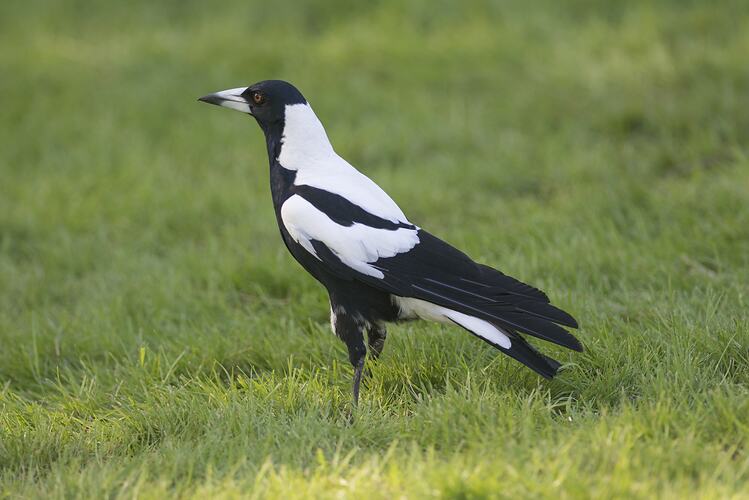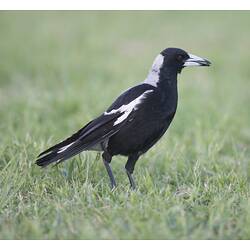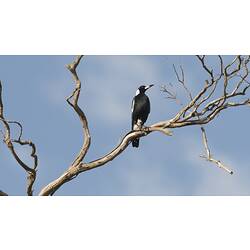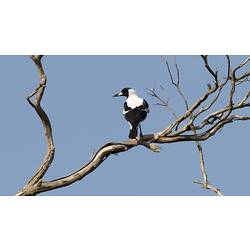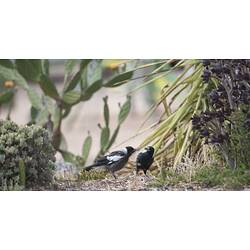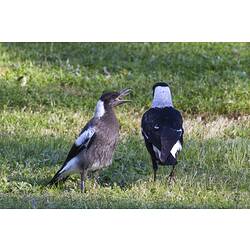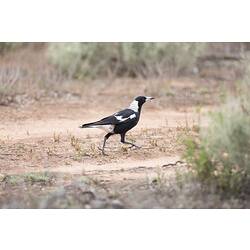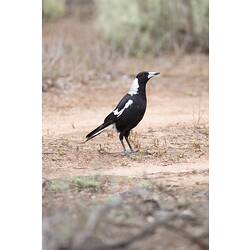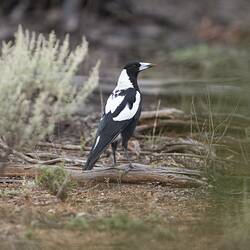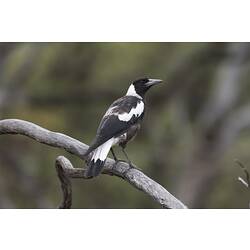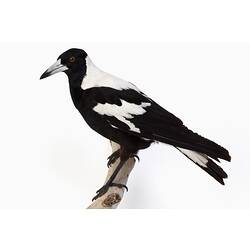General Description
Body black and white. Male: top of head, wings, face, underparts and tail tip black; wing-bar and rest of upperparts white. Female: like male, but duller and back mottled grey. Bill to tail length is up to 45 cm. Call a complex, musical, flute-like song.
Biology
Magpies are well known for their carolling calls at dawn and dusk. Their musical, flute-like songs, is one of the most complex bird songs in the world. Males defend their territory, especially during the breeding season where they will swoop at animals and humans who come too close to their nests. They can live in territorial groups of up to 24 birds, staying in the same place for many years. Magpies will walk along the ground searching for food by overturning debris or probing their bills into the dirt. They eat insects, larvae and other invertebrates. Magpies are known to remove the stingers of wasps and bees before eating them.
Distribution
New Guinea. Mainland Australia and Tasmania. Introduced to New Zealand.
Habitat
Most habitats except dense forests and arid deserts.
More Information
-
Animal Type
-
Animal SubType
-
Brief Id
A conspicuous black and white bird with a carolling call. Often walks along the ground in search of food.
-
Colours
Black, White
-
Maximum Size
45 cm
-
Habitats
Wetland, Urban, DryForest, WetForest, Woodland, Mallee, Grassland
-
Diet
Insects
-
Endemicity
-
Commercial
No
-
Conservation Statuses
CITES: Not listed, FFG Threatened List: Not listed, EPBC Act 1999: Not listed, IUCN Red List: Least Concern
-
Taxon Name
-
Scientific Author
(Latham, 1801)
-
Common Name
Australian Magpie
-
Kingdom
-
Phylum
-
Subphylum
-
Class
-
Order
-
Family
-
Genus
-
Species Name
tibicen
